
Crafting Texture for Back to Black
Polly Morgan, ASC, BSC returns to her London roots for the Amy Winehouse biopic.
All images courtesy of Focus Features
Polly Morgan, ASC, BSC says it wasn’t pressure, exactly, that she felt when taking on the story of Amy Winehouse’s rise and fall in Back to Black with director Sam Taylor-Johnson, “but we really wanted to do Amy’s legacy justice. Here was this incredible artist that had such a challenging life, and we wanted to honor her memory.”
When the cinematographer met with Taylor-Johnson, Morgan had just finished a triple-hitter: Where the Crawdads Sing (AC Nov. ’22), The Woman King (also AC Nov. ’22) and Marmalade. She’d been planning to shoot some commercials and reset, but she was excited by Matt Greenhalgh’s Back to Black script; by Taylor-Johnson’s desire to create outside the traditional biopic rubric; and by the intensely personal nature of the material, some of which she was familiar with.
“Amy wrote lyrics as a sort of therapy. So, when I read the script, I started to understand the deeper meaning to her songs and how they related to her life story,” Morgan says. “Knowing her music so well and then gaining insight into its significance to her struggle opened up her world to me.”
“My original intent was to create something visceral, a film with texture that was tactile and messy at times — a true reflection of Amy’s life.”
— Polly Morgan, ASC, BSC
Tactile and Messy
One of the first things Morgan and Taylor-Johnson agreed upon was to avoid an overly stylized look that would detract from the reality of Winehouse’s struggles. Another early decision was to shoot 1.85:1. The director “wanted that height for close-ups,” the cinematographer says, noting that such shots were a cornerstone of the shooting strategy.
“My original intent was to create something visceral, a film with texture that was tactile and messy at times — a true reflection of Amy’s life, not a clean observation of it,” she says.
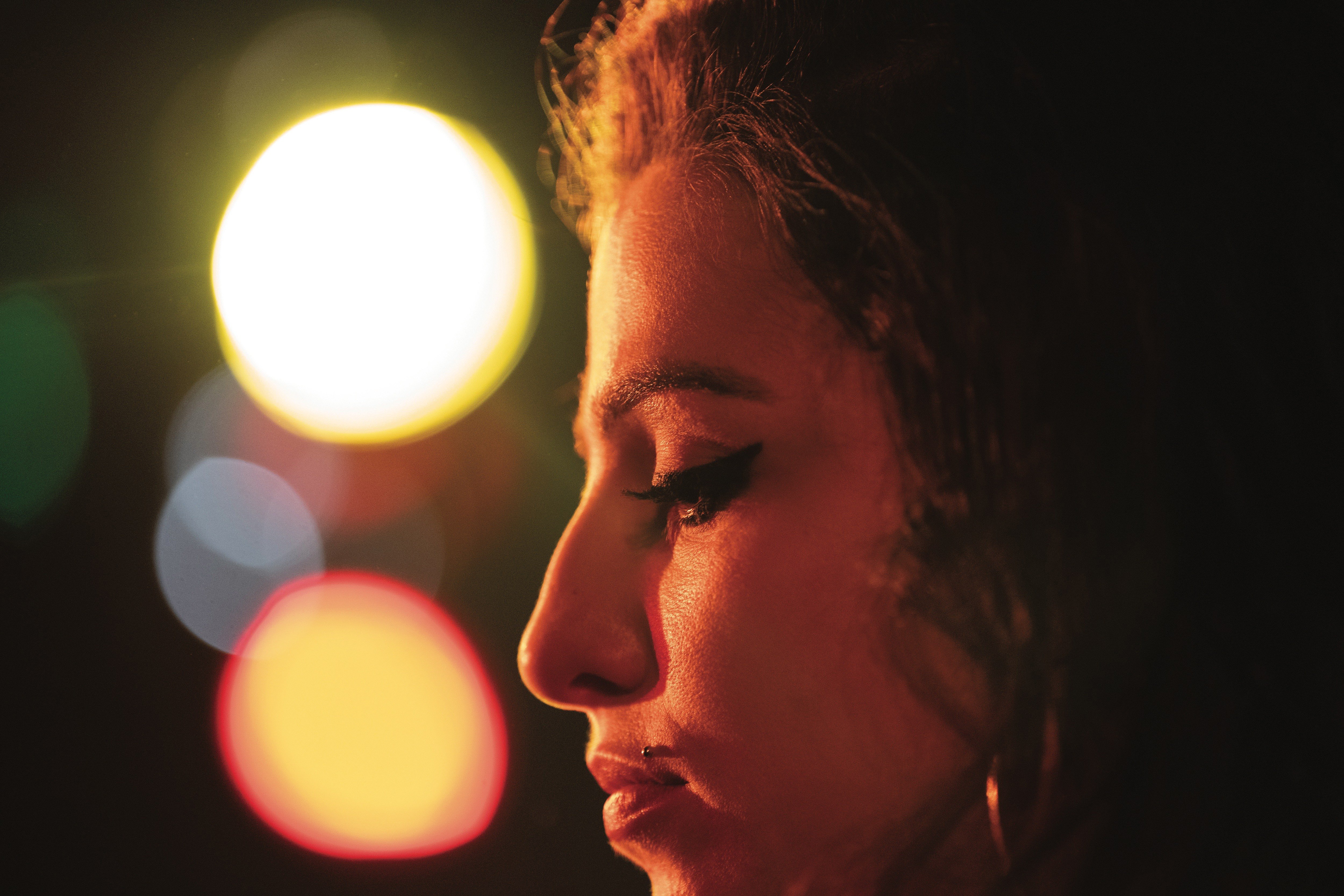
Back to Black stars Marisa Abela as Winehouse and covers the singer’s story from age 17 to 27, when she died of alcohol poisoning. It takes place mostly in Camden, Winehouse’s North London neighborhood, where she worked, sang and met the love of her life, Blake Fielder-Civil (Jack O’Connell).
Although there’s a wealth of video footage and photography of Winehouse — thanks in part to zealous paparazzi coverage — Morgan recalls that Taylor-Johnson’s look book was more of a mood board. One reference the director emphasized was Ingmar Bergman’s Persona, shot by Sven Nykvist, ASC, for the importance of close-ups.
The filmmakers did not work from a shot list. “As an artist in her own right, Sam is very instinctual in her approach to directing and doesn’t necessarily like to over-prep,” Morgan says.
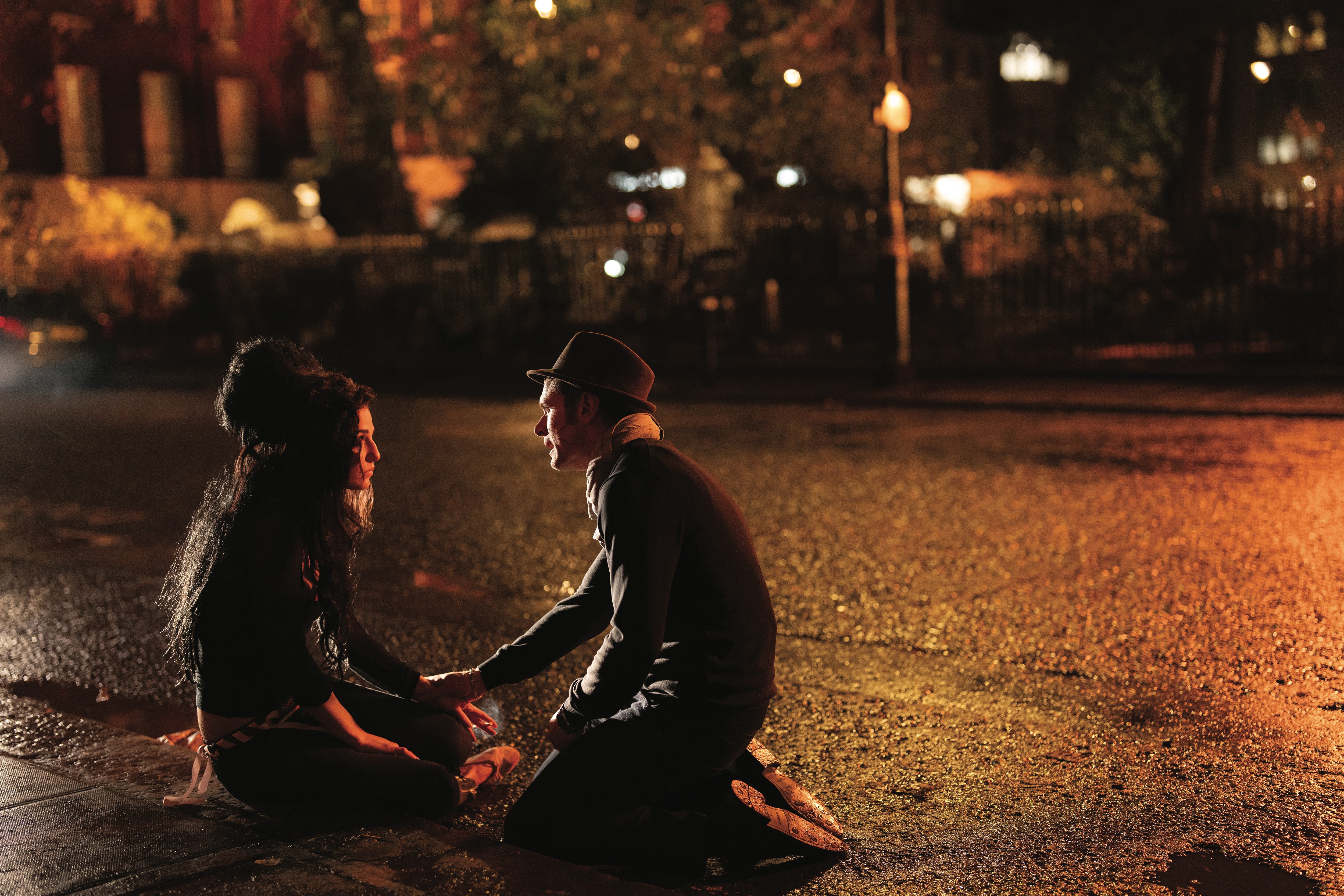
On Location in London
Back to Black was shot over 40 days at 54 locations throughout London, including many places Winehouse frequented — such as the renowned jazz club Ronnie Scott’s and the streets of Soho, the Dublin Castle and Good Mixer pubs, and the passageways and canals of Camden — as well as her flat on Jefferson Place. Sets built onstage at Ealing Studios by production designer Sarah Greenwood, and dressed by set decorator Katie Spencer, included the interior of Winehouse’s first flat; Glastonbury’s pyramid stage; Hammersmith Apollo; Shepherd’s Bush Empire; and the Clapham Grand, a music hall built in 1900.
Partial to the color rendition of the Arri Alexa, Morgan tested the Alexa Mini LF against the Alexa 35, which was relatively new at the time. The improved encoding on the Alexa 35 was especially attractive because the new LogC4 gave an extended latitude compared to LogC3, encompassing the full 17 stops of dynamic range on the camera. “We were going to be shooting on the streets of London in the winter months, and with very little lighting support,” says Morgan. “The LogC4 extended high lights and had a lot more latitude in the curve, which was advantageous to us. Also, we wanted what I’d call a ‘classic’ approach with the 1.85:1, so rather than shooting on a large-format sensor and having that expanded field of view, I wanted to go back to a 35mm sensor. The Alexa 35 ticked those boxes.”
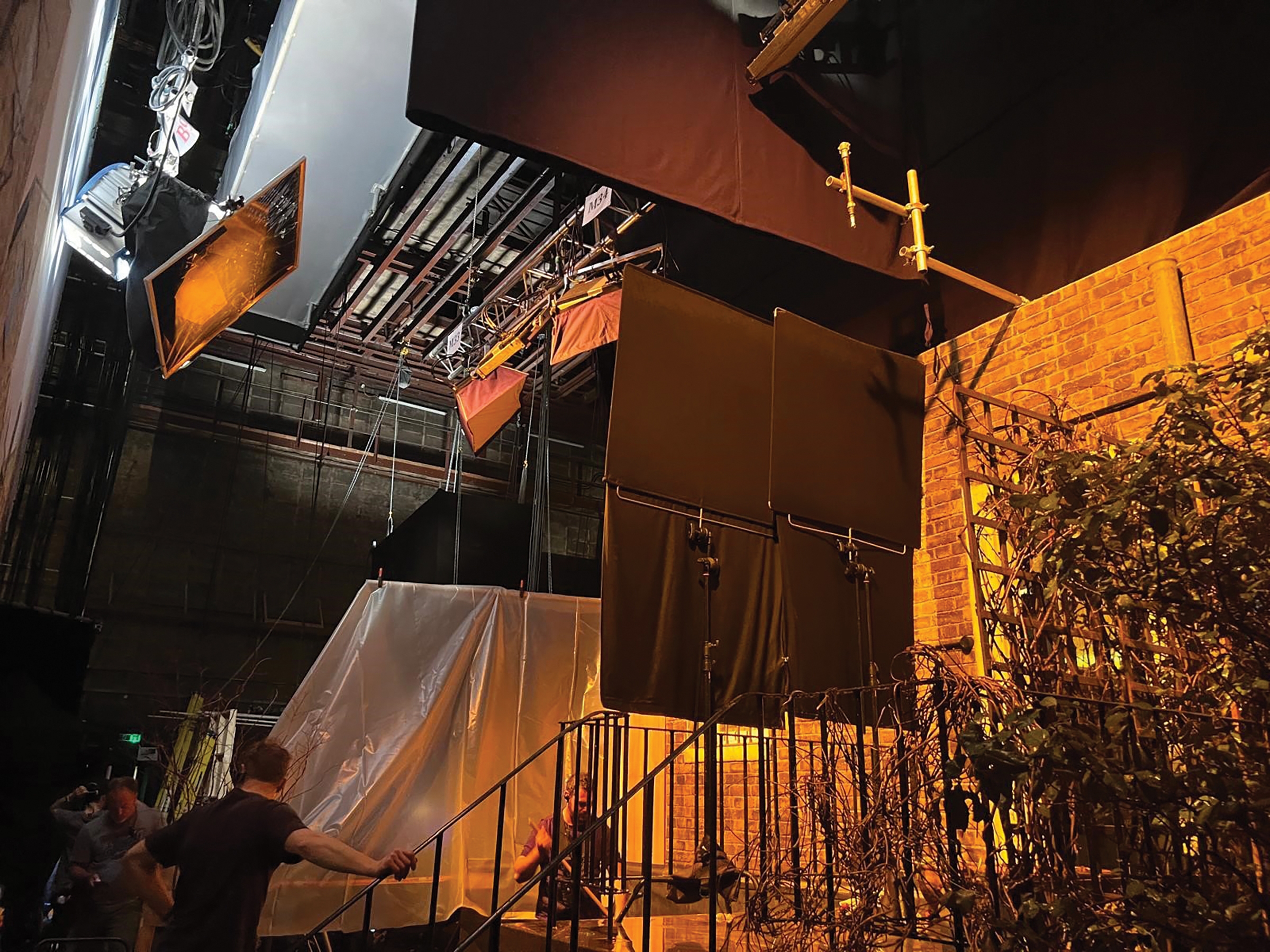
Morgan chose Canon K-35 primes as her main lenses. “The K-35s are fast and flare beautifully but are softer, giving the image a slight ‘feminine’ quality,” she says. “They also felt the most straightforward — a human point of view.
“Everybody talks about subjectivity when photographing movies, and we wanted to evoke that emotion within the viewer and help them understand Amy’s journey,” Morgan continues. “We gravitated naturally to using the 35mm K-35 about 90 percent of the time on this shoot — that was just ‘Amy’s lens.’ Every time we lined up a shot, it felt right. It’s not the most beautiful [focal length] in the world to shoot an actress’ close up, but I think it worked for an honesty we were going for. There is a rawness and a grittiness to the film that I wanted to play into.”
She credits A-camera operator Jason Ewart and B-camera operator Dora Krolikowska for their excellent work throughout the “run-and gun” production.
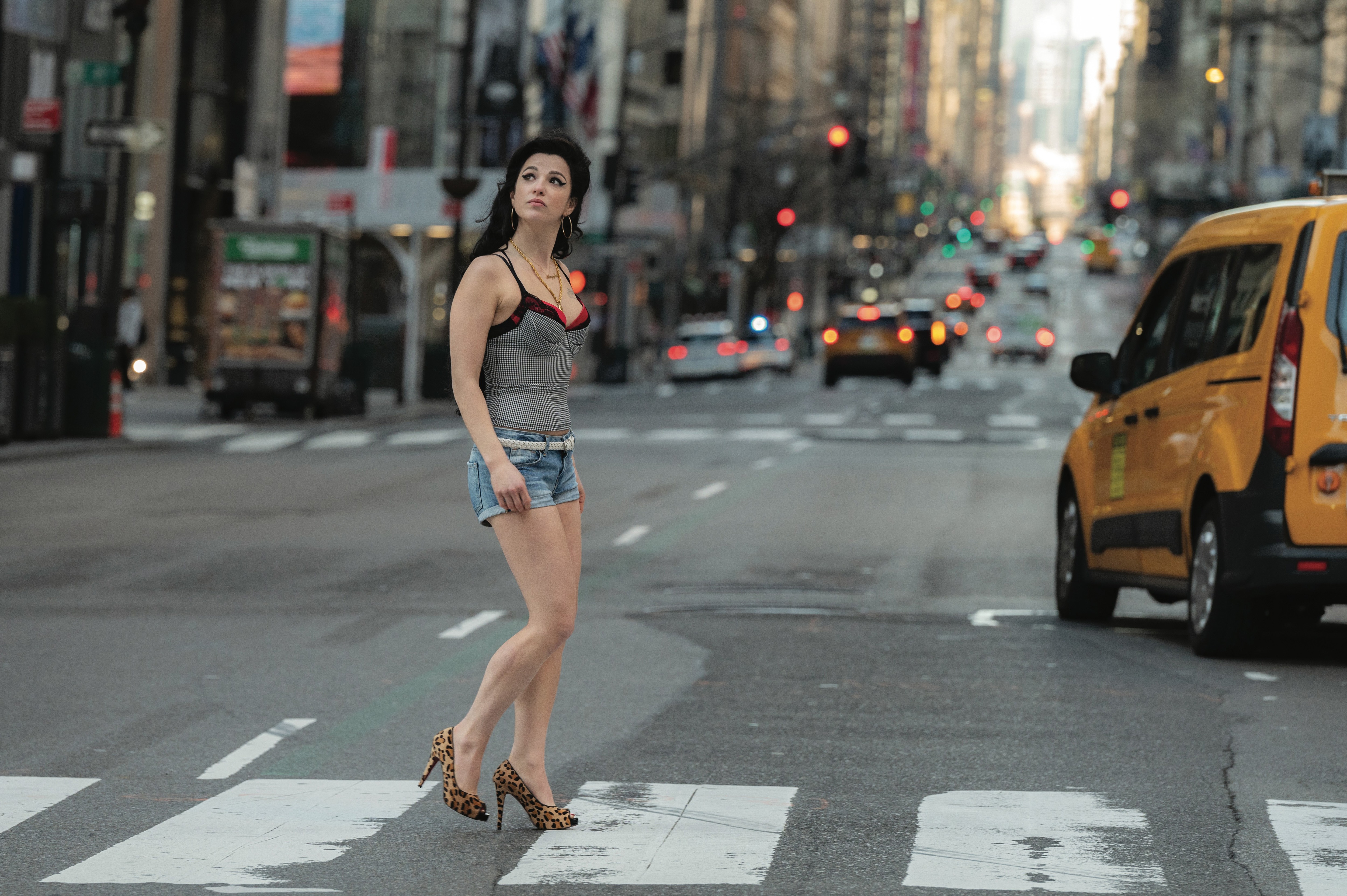
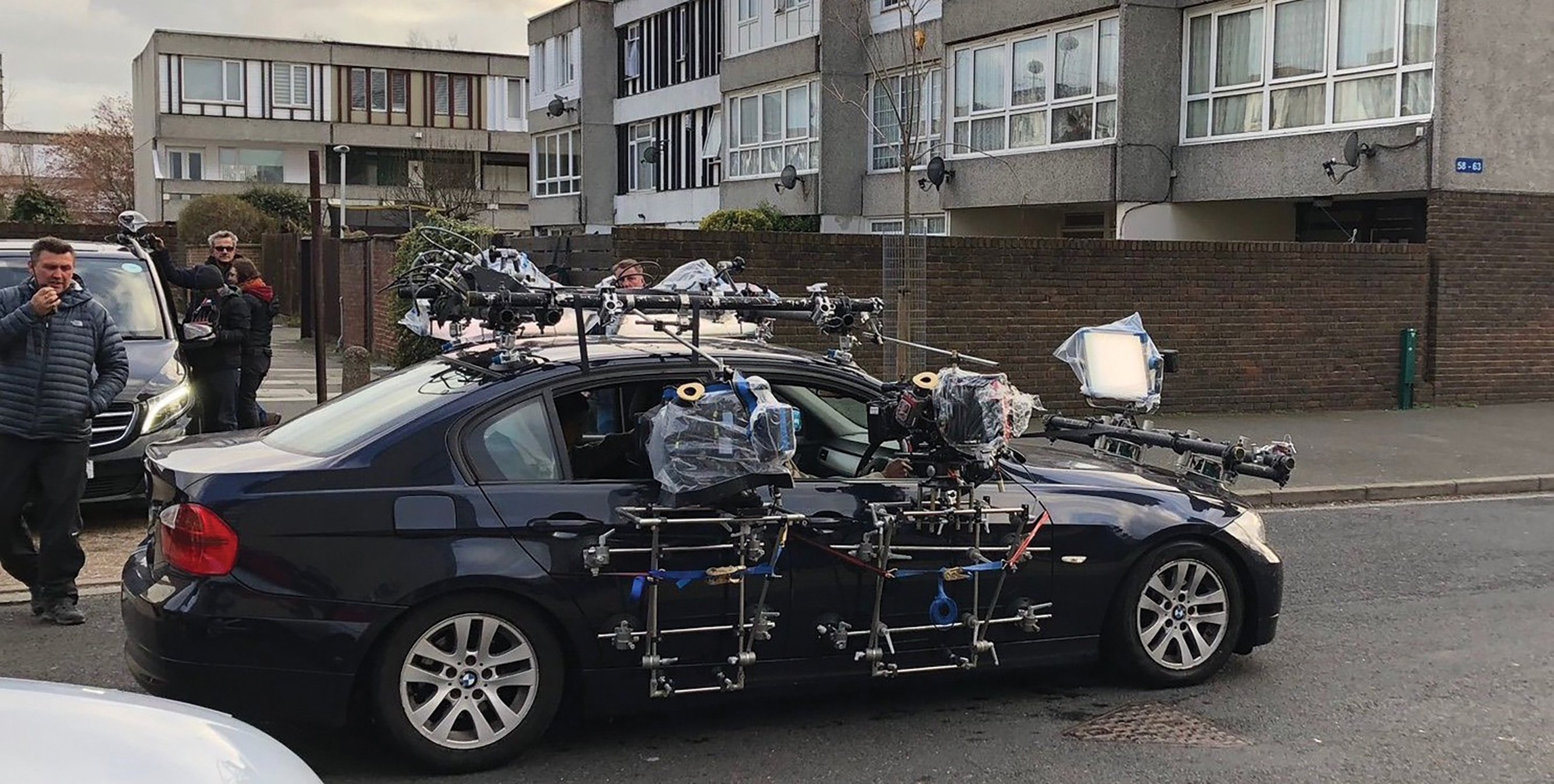
Key Collaborations
In addition to Morgan, Greenwood and Spencer, Back to Black department heads included two other women: costume designer P.C. Williams and hair-and-makeup designer Peta Dunstall. “To have a group of women tell Amy’s story felt very powerful,” says Morgan. The feeling on set, she adds, “was open and collaborative — anyone could join in on the conversation.”
Morgan cites Picture Shop colorist Natasha Leonnet as one of her most important collaborators on the production. The pair had previously worked together on Crawdads and Lucy in the Sky (AC Nov. ’19). “Natasha was vital to this film’s outcome from prep all the way through [color process],” says the cinematographer.
Morgan had just five weeks of prep, and when she saw the bold colors Greenwood and Williams were employing in their creations — which were true to Winehouse’s style — she began exploring how to make them fit within the gritty tone she had in mind.
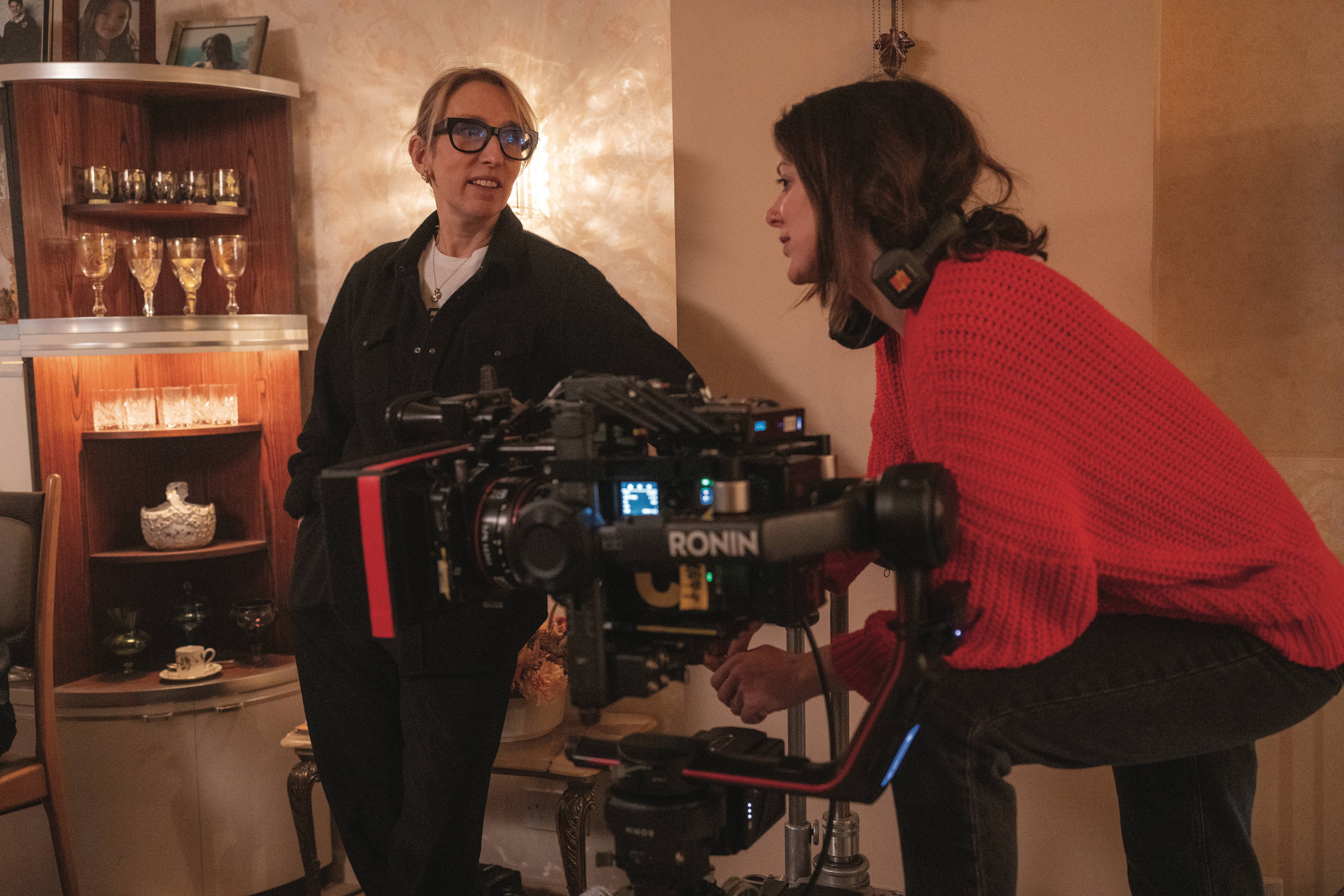
“Natasha and I talked about bleach-bypass early on as a way to desaturate the designers’ palettes,” she says. “The Picture Shop color-science team, [comprising ASC associate] Joshua Pines and Chris Kutcka, crafted the LUT, which was a real characterization of actual ENR processing.
Says Pines, “Just like we made ‘real’ film print emulations — by filming out a zillion color patches to negative stock, then printing that filmed-out negative to a print stock, and then measuring all those patches individually with a spectro-radiometer — we did the same thing, but made the print through the photochemical ENR print process at Technicolor. We did this for different ‘levels’ of ENR, along with a few other ‘special’ photochemical processes.
Adds Morgan, “The color arc we did in the grade worked at the beginning of the film to show Amy’s joy and creativity, with color dominating the image, and as her story turns darker and more desperate, we desaturated the look and leaned heavily into the ENR.”
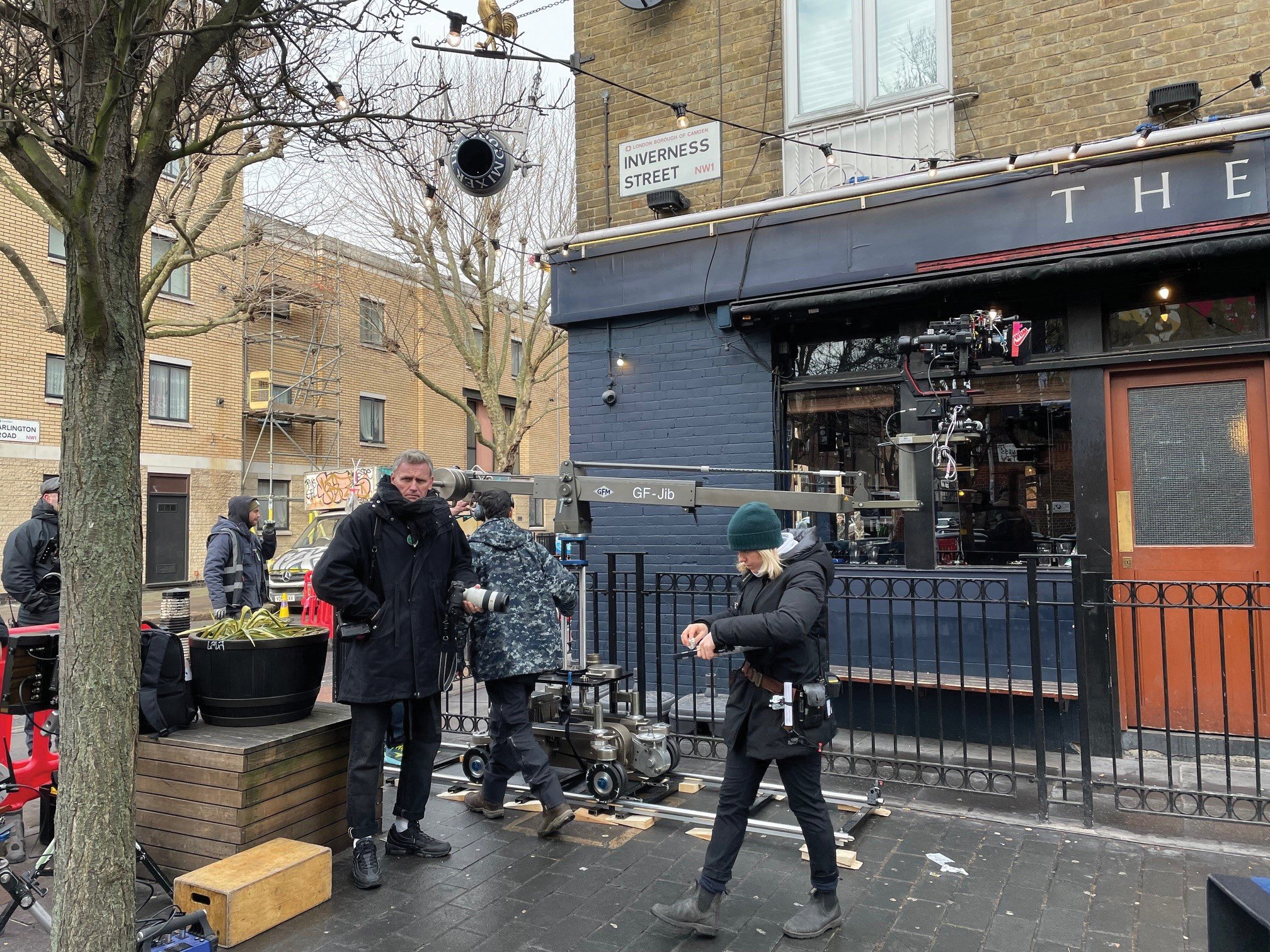
The ENR silver-retention LUT is not only desaturated but heavy in contrast. Morgan did various tests with the Picture Shop team to lift the toe of the curve to a place where she could capture enough information in the shadows. The soft contrast of the K-35 lenses helped with this, and she had to make sure she was always exposing the low end in a way that would give her the desired flexibility in the final grade.
“Sam and I wanted to shoot on film,” she reveals, “but the limited prep schedule didn’t allow for enough time for testing. Dailies were done out of Cinelab in London, and we tested for a filmout and scan back to digital on various film stocks so we could help the movie feel as film-like as possible. Sadly, time constraints and budget restricted the amount of testing we needed to do this successfully, so we explored a number of grain algorithms. The one that fit the brief the best was the very new InviziGrain [film-emulation plugin], which allowed for fine adjustments of grain type, size and intensity, and for added halation in the highlights.”
Lighting for Truth
Whether lighting onstage or on location, Morgan strove for an organic, truthful feel. “I wanted to focus on using light to express Amy’s mental state and be true to the environments she was in. In the past, I have shied away from flat frontal light, but on this film, I wanted to explore the reality of the situations and lean into it. I wanted the audience to really understand the despair Amy felt and how addiction took hold of her life.”

With the ENR LUT, the cinematographer had to hit the colors hard for them to read, and she employed a variety of lighting techniques to do so. She found modern LEDs couldn’t replicate the colors needed with the ENR LUT, noting, “The LUT took so much saturation away from the image that, depending where we were on the color spectrum, we had to explore a different approach.” The crew used large, gelled incandescent fixtures such as Wendy Lights, Maxi-Brutes and 24Ks. Lee 653 Lo So dium (with ¼ Green added at times) took a lot of stop away, so the big lights were necessary for exposure.
For the concerts depicted in the film, Morgan adds, “I wanted Amy’s live performances to pop, and when I tested the colors in prep, I just couldn’t get the correct hues,” she explains. “I contacted Chris Bushell, the lighting designer who had worked with Amy on these actual performances, and he sent me the original lighting list. We ended up using the same theatrical-lighting units: Palco 3 Mobiles, Mac 2000 movers and 5K Fresnels. They were punchy and strong enough in the color spectrum to get the color I needed.”
Morgan underscored some dramatic moments with noir technique only when it seemed appropriate. “An example of this was at the end of a sequence where Amy and Blake are high on drugs and have a fight,” she says. “The sequence takes us from the inside of a hotel to the streets of Soho, with the final scene shot with the taxi’s actual headlights as the key light [illuminating the characters], to provide high contrast and reflect the drama in the moment. I added some fill light with [Cream source] Vortexes and [Arri] SkyPanels, and lit the background with various LED units. Due to the location, we were not able to use any lifts, [so we] had to light the environment from the ground.”
Morgan remembers living in London when many of the events depicted in Back to Black were unfolding — and she “feels honored to help people gain insight into who Amy was and how much love she had to give to those around her.”
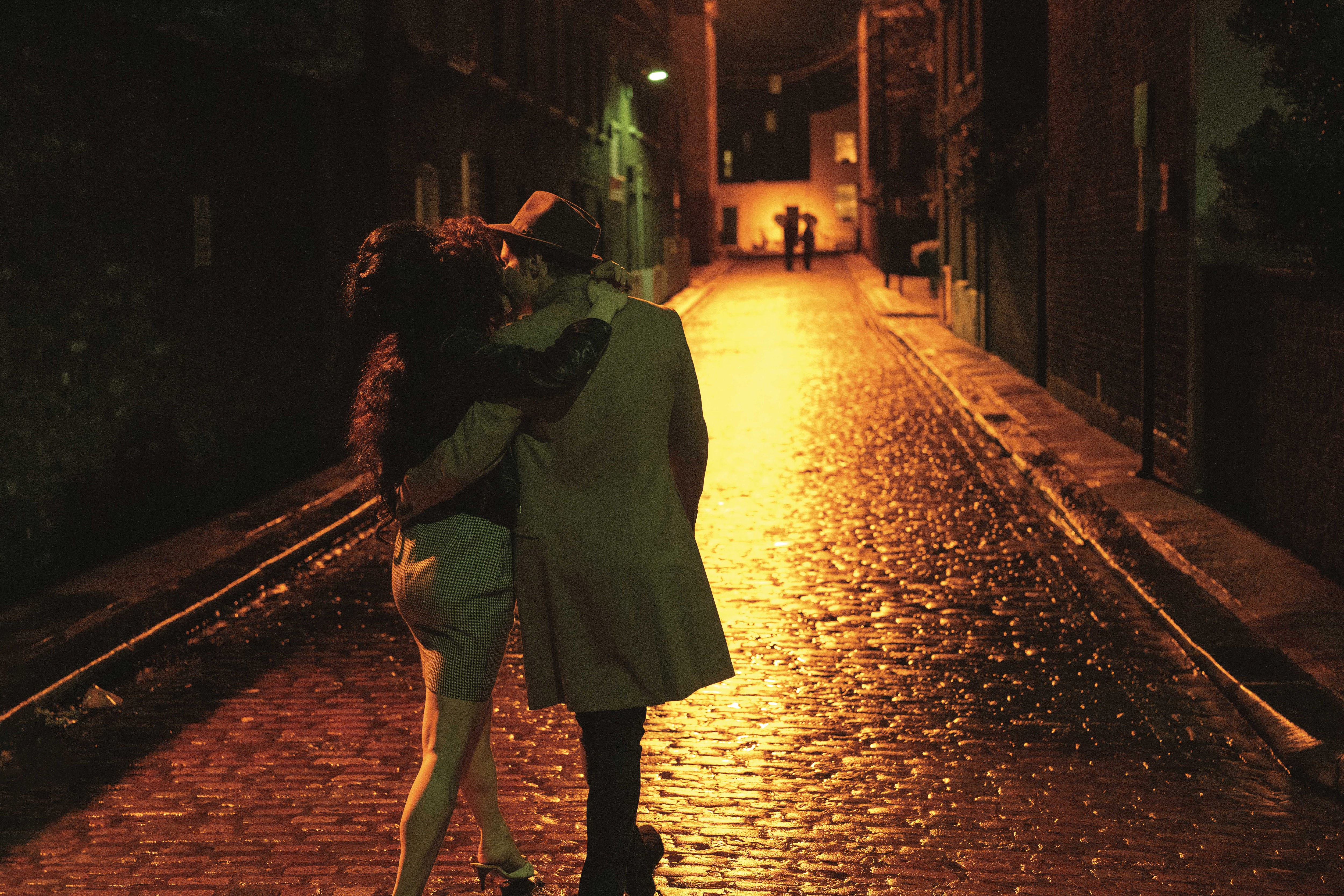
Tech Specs
1.85:1
Camera | Arri Alexa 35
Lenses | Canon K-35, Century Swing & Shift, Arriflex/Zeiss Super Speed, Arri Heroes T.One, Lensbaby 3G
Spotlight on Optics | “Amy Vision”

Morgan used a variety of techniques and glass to render the intensity of dramatic events Winehouse experienced while drunk or high — moments the filmmakers dubbed “Amy Vision.”
Sometimes Morgan would shoot at 6 fps for motion blur or with a 90-degree shutter. Or, for a scene in which Winehouse awakens after a drunken fight with Blake, the cinematographer deployed Century Swing & Shift lenses. The sequence where Winehouse loses her composure during a performance at Glastonbury called for intense flaring, which prompted Morgan to use uncoated Arriflex/Zeiss Super Speeds. For the moment when Winehouse smokes heroin for the first time, and also when she learns her grandmother has cancer, a 50mm Arri Heroes T.One was pressed into service, in particular for its very shallow depth of field. Morgan used a “crystal wand” — i.e., a multifaceted glass prism affixed to a stick — for the singer-songwriter’s nightmare of Blake and his ex having sex on her bed. The tool was employed in combination with the 35mm K-35, and “created distortion in certain areas of the frame, drawing the eye to the sharp areas and creating a heightened image,” the cinematographer says. An optical flat with glycerin in front of the lens was used for Winehouse’s walks in Camden in the rain, and a Revar Cine Compression Diopter and Lensbaby 3G were pressed into service for numerous hazy moments.
Morgan describes another example: “When Amy and Blake get into a fight at the Sanderson Hotel, we start with a descender rig as she’s running down the stairs away from him, and then cut to a Snorricam shot with Abela wearing a [Dark Chamber Media] Z Cam with the 35mm K-35. It gives the sense that you are really with her in all her messiness. When the paparazzi are chasing her, those flashing lights become overwhelming. It’s an invasion of personal space. We want the viewer to feel that.”







